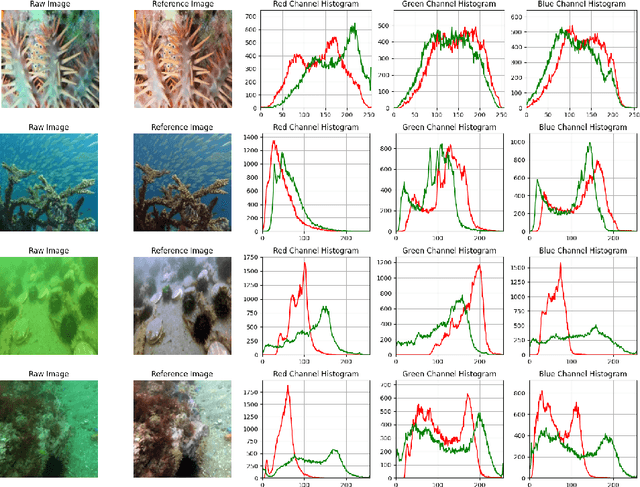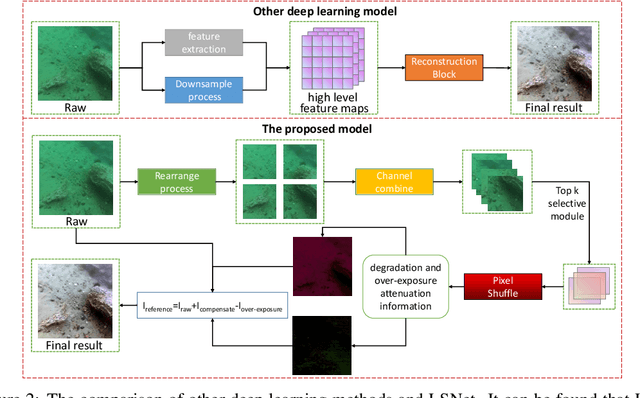Ye Fan
A 7K Parameter Model for Underwater Image Enhancement based on Transmission Map Prior
May 25, 2024



Abstract:Although deep learning based models for underwater image enhancement have achieved good performance, they face limitations in both lightweight and effectiveness, which prevents their deployment and application on resource-constrained platforms. Moreover, most existing deep learning based models use data compression to get high-level semantic information in latent space instead of using the original information. Therefore, they require decoder blocks to generate the details of the output. This requires additional computational cost. In this paper, a lightweight network named lightweight selective attention network (LSNet) based on the top-k selective attention and transmission maps mechanism is proposed. The proposed model achieves a PSNR of 97\% with only 7K parameters compared to a similar attention-based model. Extensive experiments show that the proposed LSNet achieves excellent performance in state-of-the-art models with significantly fewer parameters and computational resources. The code is available at https://github.com/FuhengZhou/LSNet}{https://github.com/FuhengZhou/LSNet.
Robust Security Analysis Based on Random Geometry Theory for Satellite-Terrestrial-Vehicle Network
Dec 28, 2021



Abstract:Driven by B5G and 6G technologies, multi-network fusion is an indispensable tendency for future communications. In this paper, we focus on and analyze the \emph{security performance} (SP) of the \emph{satellite-terrestrial downlink transmission} (STDT). Here, the STDT is composed of a satellite network and a vehicular network with a legitimate mobile receiver and an mobile eavesdropper distributing. To theoretically analyze the SP of this system from the perspective of mobile terminals better, the random geometry theory is adopted, which assumes that both terrestrial vehicles are distributed stochastically in one beam of the satellite. Furthermore, based on this theory, the closed-form analytical expressions for two crucial and specific indicators in the STDT are derived, respectively, the secrecy outage probability and the ergodic secrecy capacity. Additionally, several related variables restricting the SP of the STDT are discussed, and specific schemes are presented to enhance the SP. Then, the asymptotic property is investigated in the high signal-to-noise ratio scenario, and accurate and asymptotic closed-form expressions are given. Finally, simulation results show that, under the precondition of guaranteeing the reliability of the STDT, the asymptotic solutions outperform the corresponding accurate results significantly in the effectiveness.
 Add to Chrome
Add to Chrome Add to Firefox
Add to Firefox Add to Edge
Add to Edge